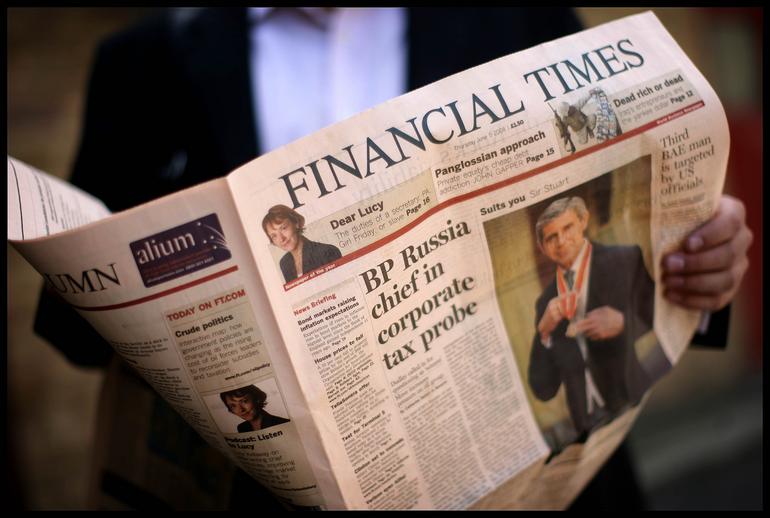 A decade ago, John Ridding, CEO of Financial Times Group, made a bold call when asked if print news would still be the significant format in 10 years.
A decade ago, John Ridding, CEO of Financial Times Group, made a bold call when asked if print news would still be the significant format in 10 years.
“Digital delivery was developing fast, with the disruptors, led by Google and Facebook, seizing share of audience at an accelerating pace,” Ridding explains in an article in The Drum last week. “White flags were being readied to hoist above many traditional print mastheads. I replied: ‘Yes, for sure,’ and was greeted with scepticism by the analysts who had studied the downward charts in print circulation and advertising, extended the trends to zero and placed me in the camp of the ‘flat earthers’ who didn’t ‘get’ the world of change and pain being visited on established titles.”
According to Ridding, he still stands by that answer and points to his own company’s path as evidence.
“The FT did ‘get’ the world of change, and now has more paid-for readers than at any other period of its 129 year-history,” Ridding explains. “It is true that most of those subscribers are now digital, that the FT has become a majority digital business, and that we expect future growth to be driven by mobile and new features from video to interactive graphics. But an equally important truth is the FT’s print circulation is now profitable, before advertising, with engaged and loyal readers.”
It comes down to the right business model, as so many things in our industry do. For Ridding, the key has been focusing on the attributes of each technology and channel and repositioning their content accordingly.
Newspapers, he says, have unique attributes that won’t be replaced by digital. He cites their ability to curate the massive mountain of content out there and give it some hierarchy of order, something digital just doesn’t do well.
The thing to understand about newspapers is that the readership decline year-to-year to has slowed dramatically, and isn’t the root of the problem. What is? The drastic decline in print advertising, as that money has moved to digital. This decrease was exacerbated by publishers’ overlying on reach, treating circulation as a “loss-leader.”
“This wasn’t just a business model – albeit deeply flawed – it also played to the egos of proprietors and newsrooms, seeking to reach and influence as many as possible,” Ridding asserts. “ABCs, a flawed measure for a flawed model were the currency of success, ignoring the quality, yield or profitability of circulation.”
And doubling down on circulation when advertising dropped only made things worse, he notes. The turnaround for publishers – at least for the ones who are continuing to find success as FT is – comes when they separate format from the revenue model.
“If publishers pivot and re-think the business approach they can find a more secure and sustainable path. That has been the experience of the FT,” he notes. “We took two big and critical decisions in 2007 – to develop a paid-for metered model online and to raise steadily and significantly the price of the newspaper.”
The key here is that they continue to produce content that inspired readers to purchase it and they didn’t give it away online for the sake of gaining eyeballs (a strategy that smacks of the old circulation at any cost models).
“As long as publishers understand advertising is not a sufficient condition of survival, and value their print content through pricing, the presses can still roll.”
As we take a step back and realize that many media brands have been chasing a future that doesn’t exist, we realize that Ridding is right.

January 24, 2017, 8:48 am